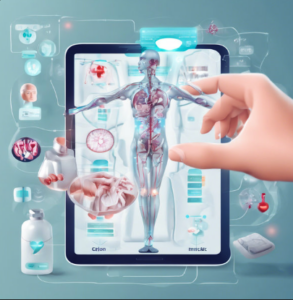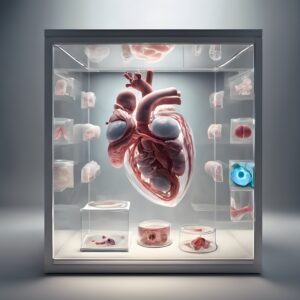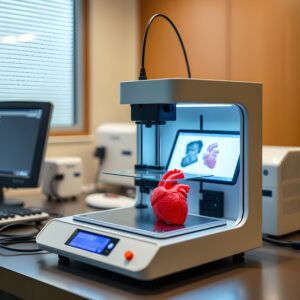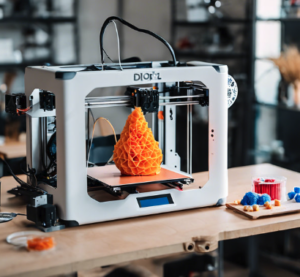Applications of SLA in Healthcare: From Dentistry to Surgery
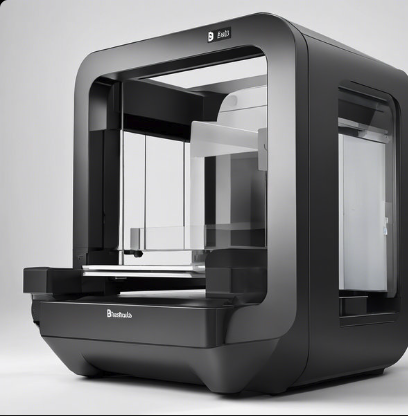
Stereolithography (SLA) is one of the most influential advancements in 3D printing technology. This technology has already made significant strides in industries ranging from automotive to aerospace, but one of the most remarkable areas where SLA is creating an impact is healthcare. Its exceptional precision and ability to print intricate designs using specialized resins make it a game-changer in medical applications, from dentistry to complex surgical procedures. By offering highly detailed and customizable solutions, SLA technology is helping medical professionals deliver personalized treatments, reduce costs, and improve outcomes. In this article, we will explore the various applications of SLA technology in healthcare, examining its role in dentistry, surgical planning, prosthetics, bioprinting, pharmaceuticals, and its future potential.
What is SLA 3D Printing?
Stereolithography (SLA) is a 3D printing technology that uses ultraviolet (UV) light to cure liquid resin into solid layers, creating detailed three-dimensional objects. SLA technology was one of the first forms of 3D printing developed and remains one of the most precise methods available. In an SLA printer, a laser is directed at a pool of resin, solidifying the material layer by layer until the desired object is complete.
Compared to other 3D printing methods, such as Fused Deposition Modeling (FDM) and Selective Laser Sintering (SLS), SLA offers superior accuracy, producing smoother surfaces and finer details. FDM printers extrude thermoplastic materials, which can lead to a rougher finish, while SLS uses powdered material that’s sintered together. In contrast, SLA’s photopolymerization process enables the production of models with intricate details, which is particularly useful in fields like healthcare, where precision is paramount.
SLA in Dentistry: Transforming Oral Healthcare
One of the most impactful applications of SLA technology in healthcare is its use in dentistry. In the dental field, precision is critical for successful treatments, and SLA’s ability to create highly detailed, customized models makes it the perfect tool for a variety of dental procedures.
Dental Implants and Prosthetics
Dental implants, crowns, bridges, and dentures traditionally required labor-intensive manual processes. However, SLA has significantly improved the speed, accuracy, and cost-effectiveness of producing these restorations. With SLA, dental professionals can create patient-specific models that match the exact anatomy of a patient’s mouth, ensuring a precise fit.
Using SLA, dental implants and prosthetics can be customized to an individual’s specific needs, allowing for better comfort and functionality. Crowns, for example, can be printed with fine details that resemble natural teeth, improving both aesthetics and function. Furthermore, SLA technology offers faster production timelines, allowing dentists to deliver quality restorations in a fraction of the time compared to traditional methods.
Speed and Accuracy in Dental Restoration
SLA’s precision and speed also play a critical role in dental restoration. Traditional methods of creating dental crowns and bridges often involve multiple visits to the dentist and a long waiting period. With SLA, the digital model of a patient’s teeth can be created and printed quickly, significantly reducing the time needed for both the dentist and patient. As a result, SLA can improve patient satisfaction by delivering faster, more accurate results.
Moreover, SLA allows for greater flexibility in creating dental appliances. Dentists can easily make adjustments to the model before printing, ensuring a better fit for the patient and reducing the need for adjustments later in the treatment process.
SLA in Surgical Planning and Simulations
SLA technology is also revolutionizing surgical planning and simulations. One of the most significant advantages of SLA is its ability to produce highly accurate 3D models of human anatomy. Surgeons can use these models to plan complex surgeries more effectively, leading to improved patient outcomes and reduced risks during surgery.
Anatomical Models for Pre-Surgical Planning
SLA enables the creation of precise anatomical models based on patient imaging data, such as CT or MRI scans. These 3D-printed models provide surgeons with a tangible representation of the area they will be operating on, which helps them better understand the patient’s condition and plan the best course of action. For example, in the case of a complex tumor removal or orthopedic surgery, having a physical model to study can make a significant difference in the precision of the procedure.
Improved Surgical Accuracy and Reduced Operation Time
Using SLA models in pre-surgical planning can reduce the time needed for surgery and improve the accuracy of the procedure. Surgeons can practice the surgery on the 3D model before performing it on the patient, which leads to more effective planning. In some cases, this can help surgeons avoid complications, reduce the number of incisions, and minimize the time a patient spends under anesthesia.
For instance, a complex heart surgery involving a heart valve replacement can benefit from SLA models that help the surgeon visualize the anatomy of the heart, the location of the valve, and the surrounding tissues. These models allow the surgeon to plan more accurately, reducing the likelihood of complications and ensuring a better outcome for the patient.
Real-World Applications in Surgery
Several successful surgeries have been performed with the help of SLA models. For instance, in 2015, a surgical team in China used a 3D-printed model of a patient’s skull to plan an intricate facial surgery. By using the model, the surgical team was able to anticipate the challenges of the procedure and prepare with greater precision. Similarly, SLA models have been used in orthopedic surgery to plan joint replacements and spinal surgeries, where the precision of the implant placement is crucial for success.
SLA for Prosthetics and Implants
SLA technology is also playing a key role in the development of customized prosthetics and implants. Traditional prosthetics often involve lengthy manufacturing processes and may not always provide the perfect fit for patients. With SLA, medical professionals can create highly personalized solutions that match the patient’s unique anatomy.
Customizing Prosthetics for Comfort and Fit
Using SLA, prosthetic devices can be tailored to fit the patient more comfortably, improving both the functionality and quality of life for those who require them. For example, patients who need a prosthetic limb can have their device custom-designed to match the shape and structure of their remaining limb, ensuring a better fit and reducing the likelihood of discomfort or complications.
SLA is also used in the creation of cranial implants for patients who have suffered skull fractures or undergone brain surgeries. These implants can be designed with a high degree of accuracy, reducing the need for manual adjustments during surgery and improving patient recovery times.
Custom Implants for Orthopedic Surgeries
SLA has been particularly useful in creating custom implants for orthopedic surgeries. Joint replacements, for example, are often tailored to fit the individual’s unique anatomy. Traditional methods of manufacturing implants can result in less-than-ideal fits, which may lead to complications or discomfort for the patient. With SLA, orthopedic surgeons can create custom implants that match the exact shape and size of the patient’s bones, improving the chances of a successful outcome.
SLA in Bioprinting: Printing Tissues and Organs
Bioprinting is one of the most exciting areas of research in SLA technology. By using SLA to print biological materials such as cells, researchers are exploring the possibility of creating functional tissues and organs. While we are still in the early stages, SLA’s ability to print complex tissue structures could one day lead to the production of artificial organs for transplantation.
Printing Soft Tissues and Cartilage
SLA technology is already being used to print soft tissues, including skin, muscle, and cartilage. These tissues are being used in research to study the effects of various drugs and to develop regenerative treatments. For instance, scientists are printing cartilage models to test treatments for osteoarthritis and other joint disorders. By using SLA, researchers can create accurate representations of human tissues, allowing for more effective testing and development of new therapies.
Future of Organ Printing
The ultimate goal of SLA in bioprinting is the creation of fully functional organs. While this is still a distant possibility, researchers are making significant progress in the development of 3D-printed organ scaffolds that can support cell growth. These scaffolds could eventually be used to create organs like kidneys, hearts, or livers, offering the potential to address the growing organ transplant shortage.
In addition to organ printing, SLA is also used to create 3D-printed tissue models for drug testing. This enables pharmaceutical companies to test the efficacy and safety of new drugs without the need for animal testing, paving the way for more ethical and accurate preclinical trials.
SLA for Pharmaceutical Applications
SLA technology is beginning to make its mark in the pharmaceutical industry as well. One of the most promising applications of SLA in pharma is the production of customized drug delivery systems.
Customized Drug Delivery Systems
SLA allows for the creation of personalized pill molds and capsules. These can be designed to release medication at specific times or in particular doses, ensuring that patients receive the right amount of medication when they need it most. This customization could be particularly beneficial for patients with chronic conditions or those on complex medication regimens, offering a more efficient way to manage their treatment.
Printing Drug Models for Testing
In addition to producing drug delivery systems, SLA is also being used to create models of molecular structures for drug testing. By printing these models, researchers can simulate how drugs will interact with cells or tissues, improving the accuracy of drug testing and reducing the need for animal experiments. This could help accelerate the development of new drugs and therapies while minimizing the ethical concerns associated with animal testing.
Challenges and Limitations of SLA in Healthcare
Despite its numerous advantages, SLA technology does face some challenges in healthcare applications. One significant challenge is material limitations. Not all resins used in SLA are biocompatible, meaning they may not be suitable for medical applications like implants or prosthetics that remain in the body for extended periods. Finding biocompatible resins that can meet the stringent requirements for medical use is an ongoing challenge for researchers.
High Costs
Another barrier to widespread adoption of SLA in healthcare is the high cost of the technology. While the prices of 3D printers have been decreasing over the years, medical-grade SLA printers and materials can still be prohibitively expensive for many healthcare providers, especially in developing countries. However, as the technology continues to mature, costs are expected to decrease, making it more accessible to a broader range of healthcare facilities.
Regulatory Hurdles
SLA-based medical devices must meet rigorous regulatory standards before they can be used in clinical practice. This can be a time-consuming and costly process, especially in countries with strict medical device regulations. However, as 3D printing technology becomes more widely accepted in the medical field, regulatory agencies are starting to streamline the approval processes for medical devices and implants.
Future Prospects of SLA in Healthcare
Despite these challenges, the future of SLA in healthcare looks promising. As research continues and new materials are developed, SLA is expected to play an increasingly important role in healthcare innovation. From personalized prosthetics to bioprinting organs, the potential applications of SLA are vast and exciting.
SLA 3D printing technology has already made a significant impact on healthcare, from improving dental treatments to revolutionizing surgical planning. By enabling the creation of highly accurate, customized medical devices and models, SLA is helping medical professionals provide better care for patients. As the technology continues to advance, SLA is poised to become an even more integral part of modern healthcare, offering the potential to transform medicine in profound ways.
Visit our other website: https://synergypublish.com

